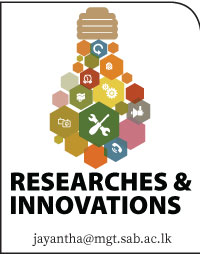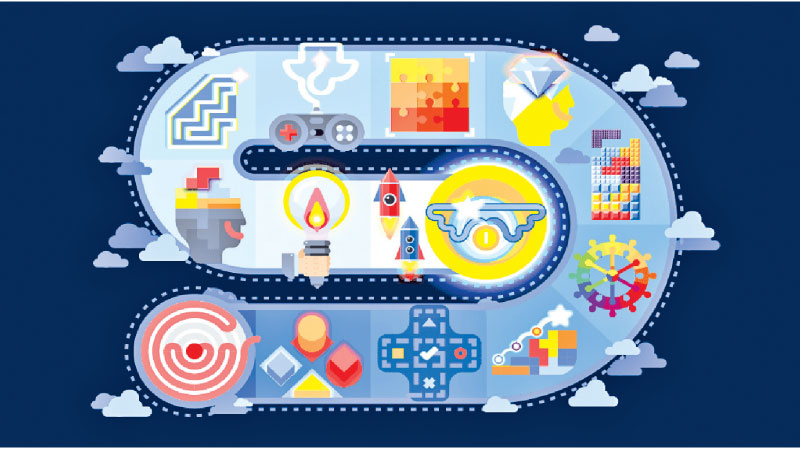Gamification is defined differently in both the research literature and among people. Gamification science differs not only from game science but also from other types of gamification research that are not grounded in scientific principles. Gamification science is not intended to condemn non-scientific methods of studying gamification, but rather to set specific boundaries for what the subdiscipline encompasses. The goal of gamification scientists is to understand how to use games to influence human behaviour, attitudes, and other states.
 Although gamification has garnered significant research attention, the results and literature are scattered. There is a lack of long-term studies analysing the effects of gamified interventions in this field of research, which makes the assessment of active learning strategies difficult. Due to the limited generalizability of much published research on this topic, our primary objective is to expand the knowledge evaluation component to encompass future applications of gamification in business contexts. Based on the above summary, four themes have been identified as 1) human-centred design methodology; 2) emphasis on inclusivity and diversity in gamification strategies; 3) the role of gamified elements in improving engagement; and 4) the effects of gamification on employee behaviour.
Although gamification has garnered significant research attention, the results and literature are scattered. There is a lack of long-term studies analysing the effects of gamified interventions in this field of research, which makes the assessment of active learning strategies difficult. Due to the limited generalizability of much published research on this topic, our primary objective is to expand the knowledge evaluation component to encompass future applications of gamification in business contexts. Based on the above summary, four themes have been identified as 1) human-centred design methodology; 2) emphasis on inclusivity and diversity in gamification strategies; 3) the role of gamified elements in improving engagement; and 4) the effects of gamification on employee behaviour.
Human-centred design methodology
Designing products, services, or experiences with a deep understanding of the people who will use them is known as human-centred design (HCD). In gamification, HCD ensures that the game elements and mechanics are tailored to meet the user’s needs, preferences, and motivations. The concept of points and badges is not a new one. The video game industry and academic research into the benefits of games have led to the idea of “gamification”. Gamification utilises game elements and mechanics to motivate and engage end-users.
 Gamification has become increasingly crucial in human-computer interaction recently, with applications in education, health and wellness, tourism, and driver training. User-centred design practices profile users, define their behaviours, and utilise that information to inform design decisions. Since the introduction of gamification, it has been utilised to achieve a range of objectives. Users were motivated by points, badges, and leaderboards (PBLs) in the early days of gamification. Krathet al. (2021) criticised this reward structure as “pontification” because it takes the least essential aspect of games and makes it the centre.
Gamification has become increasingly crucial in human-computer interaction recently, with applications in education, health and wellness, tourism, and driver training. User-centred design practices profile users, define their behaviours, and utilise that information to inform design decisions. Since the introduction of gamification, it has been utilised to achieve a range of objectives. Users were motivated by points, badges, and leaderboards (PBLs) in the early days of gamification. Krathet al. (2021) criticised this reward structure as “pontification” because it takes the least essential aspect of games and makes it the centre.
Likewise, it is practically necessary to incorporate human-centred gamification elements to create engaging game-based features, such as leaderboards, upper levels, and higher virtual rewards, which are widely used in game-based learning settings. One such example is that, gamification or game-based elements can be considered as powerful tools to influence employee behaviour such as enthusistic engagement, on-time work submission and meeting the proper deadlines, higher performance driven working mindset, and also in creating a more engaging and dynamic workplace in various sectors including retail, sales, healthcare and education. Hence, human-centred gamification strategies can also motivate employees to excel in multiple aspects of their jobs by aligning them with specific firm-oriented objectives.
Inclusivity and diversity in strategies
As gamification is becoming a trend in many industries today, the extent to which engagement can be achieved as a result of gamification is indisputable. The reason gamification is so popular is that it provides easy access to a sense of engagement and self-efficacy that would otherwise be impossible due to its ease of use. Through this scoping review, it was identified that the application of gamification to employee performance management has tremendous organisational potential. With its wide array of concepts, theories, and empirically validated benefits, gamification enhances employee engagement, motivation, and overall performance. To motivate users, game-based approaches are employed to present them with challenges they must overcome, as well as to utilise narrative structure, visuals, strategic elements, and game rules to engage them.
Furthermore, gamification strategies must emphasise diversity to create an engaging and supportive environment for all users. For example, when designing and implementing gamified systems, it is essential to ensure that these principles are incorporated to enable a diverse range of individuals to participate and benefit from the systems. Similarly, it is necessary to utilise pictures, appeals, and narratives that reflect the diversity of gender, race, and even generation gaps among consumers, as this will also influence the adoption of gamification strategies. It is also crucial to refrain from reinforcing stereotypes and strive to appeal to a varied audience. It has been identified that gamification has been studied in four areas related to HRD: employee learning, task performance, employee wellness, and emerging contexts.
Additionally, it is essential to focus more on engaging users’ intrinsic motivation, as most employees are concerned with promotions, salary increments, and incentives. It is also necessary to make professional tasks more enjoyable and entertaining, and to encourage continued participation at the organisational level. Therefore, one effective strategy is the use of leaderboards and challenges, which encourage beneficial competition among participants within the firms.
Role in improving engagement levels
Recently, there has been renewed interest in motivating behaviour changes among users and helping them achieve tasks and goals more productively and efficiently by changing their behaviour. The concept of gamification is well-known, characterised as the application of game design elements to non-game contexts. The last two decades have seen a growing trend towards the applicability of gamification in helping users to solve problems, learn, and explore their motivations.
For example, various contexts, including education, business, and healthcare, can benefit from applications incorporating gamified elements. Organisations can enhance user motivation, participation, and overall experiences by incorporating game-like or game-based features and mechanics into non-game environments.
When considering gamification, goals are often set, accomplishments are earned, and rewards are obtained. Furthermore, to enrich user satisfaction, gamification utilises heuristic design patterns and various technical features, such as motion in objects within the visuals and dynamic game elements.
It is crucial to have a greater focus on engaging users’ intrinsic motivation, as tasks become more enjoyable and entertaining, and they are encouraged to continue participating. The leaderboards and challenges encourage beneficial competition among participants. The past decade has seen rapid development in game-based motivation research. As users compete to outperform each other, social interaction and competition can significantly increase engagement. For example, levels and progress bars are common visual indicators that clearly show the progress in gamified systems.
The immediate effects on employee behaviour
Although the former research demonstrated the utility of leaderboards, the techniques show effectiveness at specific levels or in different domains, such as social networking, health and fitness, or productivity. The leaderboards concept is also identified as one of the ten key “ingredients” in the game design context.
Similarly, it is possible to create these kinds of leaderboards, which are widely used in game-based learning contexts, by arranging the names in such a way that the user appears in the middle, with better- and worse-performing individuals positioned around them for further supervision. For example, gamification can be a powerful tool to influence employee behaviour, drive performance, and create a more engaging and dynamic workplace in the retail sector. Gamification strategies can also motivate employees to excel in various aspects of their jobs by aligning them with specific retail objectives.
Original publication source:
Jayawardena, N. S., Perera, C. H., Dewasiri, N. J., & Jayarathne, P. A. (2025). The Future of Gamification in Organisations: A Scoping Review. In Behl, A., Sampat, B., & Pereira, V. (Eds), Gamification and Global Business Management: Mapping the Future, (pp. 119-146). World Scientific Publishers
By: Dr. Nirma Sadamali Jayawardena
Assistant Professor in Marketing Area, University of Bradford, UK.
Dr. Charitha Harshani Perera
Lecturer, Northumbria University, UK
Dr. P. G. S. Amila Jayarathne
P. G. S. Jayarathne, Senior Lecturer in Marketing, School of Leadership, Management and Marketing, De Montfort University (DMU), Leicester, UK.






